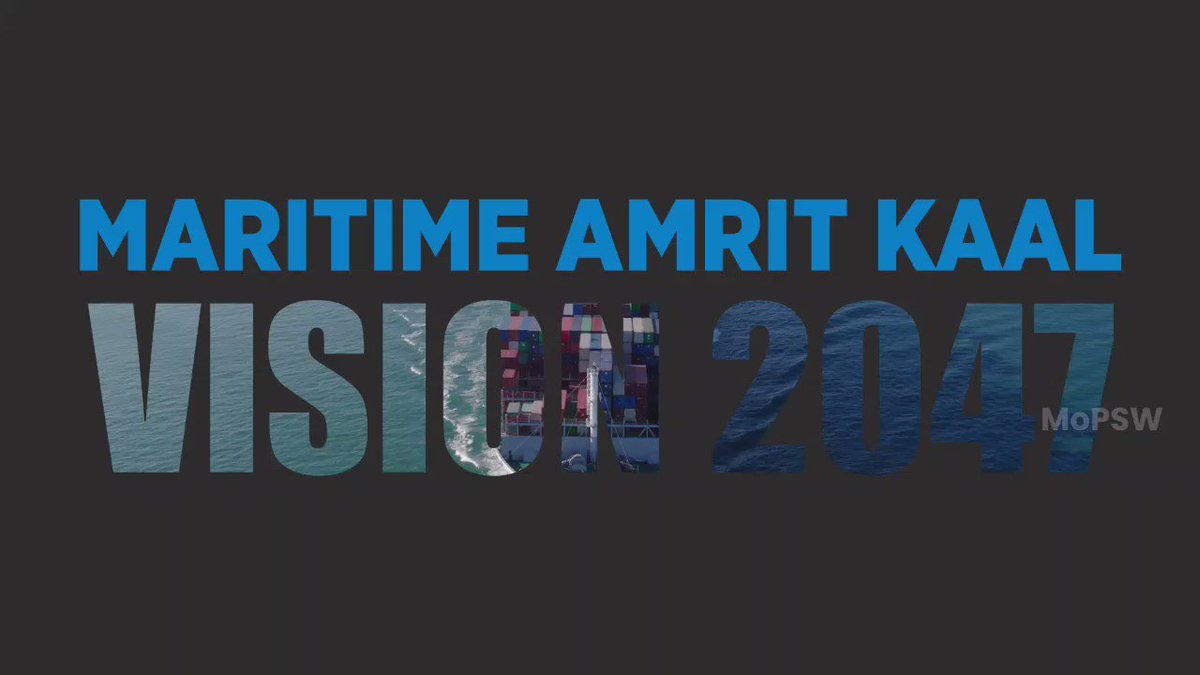
Maritime Amrit Kaal Vision 2047: India’s bold ₹80 lakh crore push to boost coastal and inland water transport
NEW DELHI : India’s coasts have seen many eras when commerce and culture have blossomed over millennia. But maritime freight movement has dropped in recent years, even though this is the cheapest mode of transportation.
Aware of the vast potential here, the Union government has highlighted the blue economy as one of the 10 core motors of economic growth in its ‘Vision 2030’ document. There is also the Maritime Amrit Kaal Vision 2047, a subsidiary of the Amrit Kaal Vision 2047, that focusses on enhancing ports’ capacity and promoting inland water transport and coastal shipping with a proposed investment of Rs 80 lakh crore.
By channelling technology, digitisation, and renewable energy, the government is looking to give ports a facelift and make them safe, smart, secure, and sustainable. There are proposals to increase the capacity of existing ports, develop new ones and maritime clusters, and enhance the efficiency of ports with the incorporation of the latest technology.
Through these measures, the government hopes to improve multi-modal connectivity at the ports and subsequently improve the modal share of coastal shipping and inland waterways.
Amit Tandon, CEO & Managing Director of supply chain and logistics provider Asia Shipping India, says the role of waterways in logistics services is projected to expand substantially over the next 23 years as the Indian government strives to position the country as a global leader in maritime innovation and growth.
He adds that the significance of the Maritime Amrit Kaal Vision 2047 is underscored by the monumental investment commitments witnessed during the Global Maritime India Summit 2023. Memoranda of Understanding (MoUs) worth about Rs 10 lakh crore were inked, heralding a new era of port modernisation, green initiatives, and infrastructural development.
“These investments, coupled with public-private partnerships (PPPs) and targeted policy interventions, are poised to revolutionise India’s maritime landscape, bolstering its position as a global maritime powerhouse,” says Tandon.
In a further push to modernise the maritime sector, the government has launched the National Logistics Portal-Marine (NLP Marine). India’s port-led industrialisation scheme aims to reduce logistics costs by locating industries near ports under the Sagarmala initiative.
t’s not just coastal trade that the government is looking to spur. The Amrit Kaal Vision also focusses on the inland waterways sector, with an ambitious plan to invest Rs 35,000 crore by 2047 to establish a robust network.
Under the National Waterways Act, 111 waterways have been designated as National Waterways (NWs) to promote Inland Water Transport (IWT). The key developments include the construction of terminals along the Ganga and Brahmaputra rivers and the implementation of the Indo-Bangladesh Protocol (IBP) route, which opens up alternative connectivity corridors, particularly benefiting the Northeast region.
Ketan Kulkarni, Deputy Managing Director, Gati Express and Supply Chain Pvt. Ltd, says as the government aims to boost logistics competitiveness, robust waterway infrastructure can reduce costs, achieve efficiency, and build an effective modal mix.
“It will positively impact companies from the freight-intensive sectors such as manufacturing, construction, retail, etc. Moreover, optimised coastal shipping and waterways pave the way for a robust multimodal transport ecosystem, the vision of the PM Gati Shakti National Master Plan,” Kulkarni says.
Beyond logistics, the government is also looking to promote ocean, coastal, and river cruises.
Shipping reforms are expected to generate significant employment opportunities and strengthen India’s maritime capabilities with the cruise, shipbuilding, and ship repair industries, leading to huge job creation.
India’s 7,500-km coastline, along with 12 major and 187 minor ports, makes it an emerging hub for shipping and transshipment. Waterways are the cheapest mode of transport, costing Rs 1.19 per tonne km compared to `2.28 on highways and Rs 1.5 via railways.
What the current infrastructure requires now is a continued policy push. “There are infrastructure limitations when it comes to storage at ports and terminals, first- and last-mile connectivity, water channel depth, technology adoption in port operations, etc.,” says Kulkarni. But, he notes, it’s encouraging that policymakers are addressing these challenges.
Competing with road and rail transport for a share of the cargo movement requires strategic planning and upgrading infrastructure, streamlining regulatory frameworks, and addressing environmental concerns, say industry players. Additionally, developing a skilled workforce will be essential to supporting operations.
